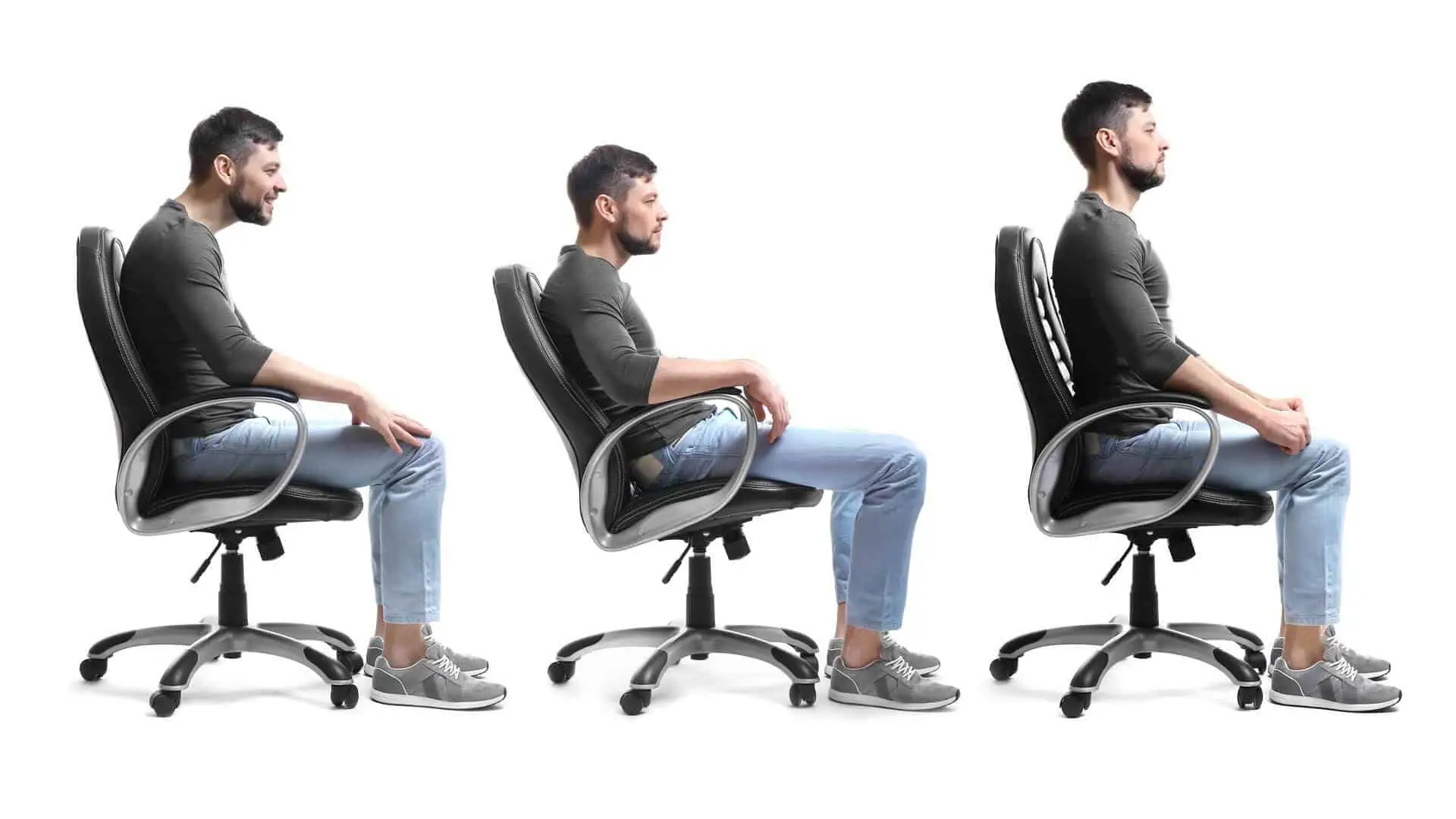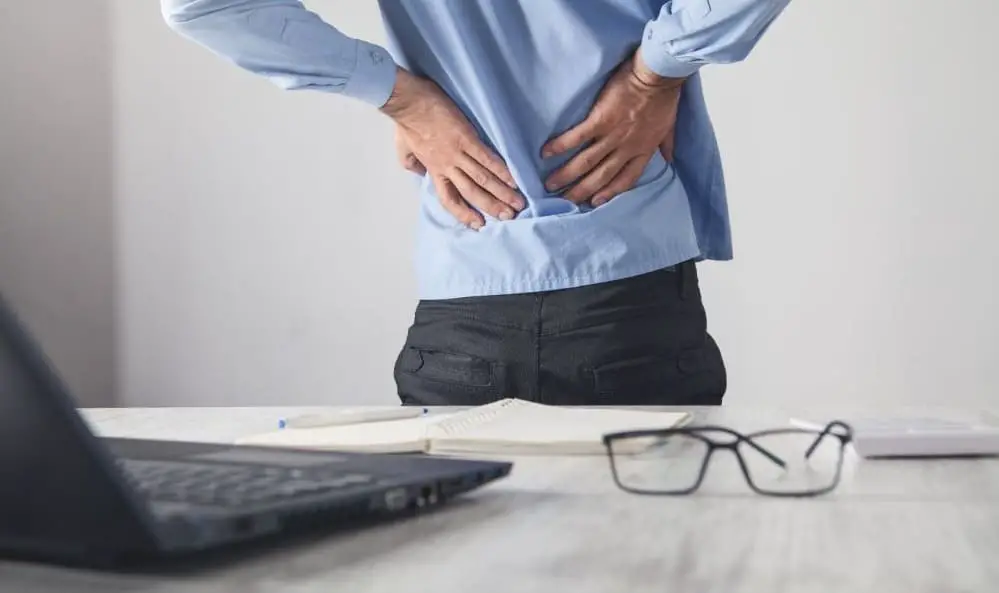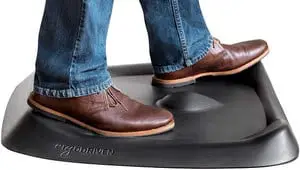Did you know that sacroiliac joint pain is one of the most common sources of chronic back pain? This medical condition accounts for 15% to 30% of patients with back issues. Because of the complex nature of SI joint pain, identifying and treating this problem becomes more difficult.
Certain activities, like sitting and standing, may aggravate the symptoms of SI joint pain. Therefore, it becomes much more important to understand the best way to sit with sacroiliac joint pain, especially when you are required to sit for long hours.
In this post, we are going to thoroughly talk about how to sit with sacroiliac joint pain to help provide comfort and maximize your productivity at the office. In addition, we will guide you with specific measures to prevent further damage while relieving the constant pain and discomfort.
All content and media on Office Solution Pro are created and published online for informational purposes only. It is not intended as a substitute for professional medical advice and should not be relied on as health or personal advice. This post may contain affiliate links.
What is Sacroiliac Joint Pain?
Sacroiliac joint pain (SI joint pain) is a pain in the lower back and buttocks caused by damage or injury to the sacroiliac joints. These joints are located between the hip and the spine. According to the Mayo Clinic, this condition is also known as sacroiliitis, an inflammation of one or both of the sacroiliac joints.

Image sourced from Alpine Spinal Rehab and Wikipedia.
Sacroiliac joint pain may cause discomfort in your lower back, buttocks, and sometimes down one or both legs. Unfortunately, this condition is hard to diagnose because it can be mistaken for symptoms of other back pain. Therefore, the best way to treat sacroiliitis is to consult your doctor or physician.
What Are the Symptoms of Sacroiliac Joint Pain?
If you’ve been diagnosed with sacroiliac joint pain, you likely have pain on either side of your tailbone. This pain can radiate around your groin and may reach the backside of your legs. While the pain may happen on both sides, it’s often one-sided. Numbness and weakness in the legs are also symptoms of SI joint pain.
Depending on the severity of the condition, symptoms of sacroiliac joint pain may include the following:
- Pain in the lower back
- Pain in the hips and buttocks
- Numbness and tingling in the legs
- Pain that radiates from the pelvis to the backside of the thigh
Because these two joints provide support and stability, certain activities like sitting, standing, and walking, especially stair climbing, may worsen the pain. Specific transitional movements like standing from a sitting position may also aggravate the symptoms.
What Are the Causes of Sacroiliac Joint Pain?
Sacroiliac joint pain may happen when the ligaments become too loose or too tight, according to the Mayfield Brain & Spine Clinic. Some of the possible causes of sacroiliac joint pain include:
- Traumatic injury – a sudden impact may damage the sacroiliac joints
- Pregnancy – additional weight may cause abnormal tears in the joints
- Arthritis – natural wear and tear of the sacroiliac joints
- Infection – rare cases that may infect the sacroiliac joints
Dealing with SI joint pain while resuming normal working activities is not to be taken lightly. Therefore, it’s best to learn the proper techniques for sitting with sacroiliac joint pain to help mitigate the risks of further damage, especially when you need to sit at work for a living.
Best Way to Sit with Sacroiliac Joint Pain
Specific movements can make SI joint pain worse. It’s advised not to bring your knees to your chest forcefully or bend the waist with your knees straight. Doing these movements may put pressure on the joints and prolong recovery. With that said, here are the best ways to sit with sacroiliac joint pain:
1. Sit with Proper Posture
The best sitting position when suffering from sacroiliac joint pain is to sit back in your chair while keeping your back straight. Remember to press your chest upward while keeping your shoulder blades relaxed. Staying aligned while maintaining this posture may help reduce unnecessary stress on your SI joints.

The best ergonomic office chair can help you to sit with proper posture, removing pressure from your lumbar spine.
The goal is to limit how often you shift your weight from one side of the body to another. Often, many people fall into the trap of shifting their body weight to one side when sitting. Certain actions, like crossing your legs, may also cause an imbalance in your overall posture.
Another thing to remember is to avoid sitting on thick wallets and phones in your back pocket. Not only does this pressure your SI joints, but you run the risk of pinching your sciatic nerve. To help you achieve better alignment, the right office chair can help you, which brings us to…
2. Sit in an Ergonomic Office Chair
The best thing you can do to help support your sacroiliac joints is to sit on a high-quality ergonomic office chair. While regular chairs can be beautiful by design, they do little or nothing to help support your spine. Not only do ergonomic chairs provide comfort, but they can also help maintain a neutral sitting posture.
If you cannot change your office furniture, it’s essential to find a position that relaxes your lower spine. An excellent way to do this is to place an ergonomic lumbar cushion or a rolled towel on your back, just above the beltline. Avoid slouching and sit upright whenever the back is not supported.
3. Brace Yourself
Often, too much movement may exacerbate your sacroiliac joint pain. This is what’s known as hypermobility. To help solve this issue, some people find relief from wearing a sacroiliac hip brace. These belts are designed to help your SI joints heal properly by limiting excessive movements and reducing inflammation.
If your pain becomes unbearable, consider wearing this brace, especially when it’s painful when walking or climbing the stairs. Sacroiliac hip belts can sometimes be worn 24 hours per day; however, we advise you to consult your doctor or physician to get the best recommendation.
4. Apply Heat or Ice
Both prolonged sitting and excessive movements may cause inflammation in your sacroiliac joints. Therefore, applying cold ice can help reduce swelling. You can place an ice pack for 15 minutes once every hour of sitting. Doing so will prevent frostbite while allowing blood vessels in the area to circulate normally.

Applying heat can help soothe pain while promoting healthy blood circulation.
If the inflammation is under control, usually the day after, applying heat can be a good way to provide relief and soothe the aches. Try using a heating pad or a topical cream to promote healthy blood circulation in your lower spine.
5. Stretch Frequently
If you’ve been sitting for a while, it’s best to incorporate simple stretches to reduce the risk of muscle stiffness. Doing so between long sitting sessions may work wonders in relieving your sacroiliac joint pain.
One of the simplest stretches you can do to help relieve SI joint pain is the hamstring stretch. If you are at the office, a seated hamstring stretch can be done while sitting on your chair. Perform this movement by extending one leg straight in front of the body until you feel a light stretch on the backside of your thigh.
Taking the time to stretch once every hour could be a massive game-changer in your overall well-being. Here are other simple exercises to help relieve SI joint pain that you can do at home or the office, as recommended by Physical Therapists Bob Schrupp and Brad Heineck:
However, if the pain is too unbearable, you might want to take some rest by lying on your back on the floor, preferably on a soft mattress. You can also try putting your feet up while lying down on the couch, using a small pillow to support either your head or your back.
Often, many people make the mistake of overworking without taking frequent breaks. Not only is sitting too much bad for your overall health, but it’s counterproductive in your efforts to get quality work done. Perhaps, a good 10-minute break is just what the doctor ordered.
Related Question to Sacroiliac Joint Pain
1. What aggravates SI joint pain?
According to the Mayo Clinic, the pain associated with sacroiliac joints happens in the buttocks and lower back. Because these joints provide stability, they play a significant role in absorbing impact during transitional movements, such as walking and lifting heavy objects.
Often, the biggest culprit that aggravates SI joint pain is hypermobility. These are excessive movements when the joints are in the process of recovery. SI joint pain may be aggravated by:
- Standing with your weight on one side of the body
- Prolonged standing
- Walking with large strides
- Stair climbing
- Running
2. Does sitting make SI joint pain worse?
Yes, sitting may cause SI joint pain to become worse. According to the Mayfield Brain & Spine Clinic, symptoms of sacroiliac joint pain may worsen when sitting or standing. Hypomobility happens when your joints become stiff over time due to a lack of movement, preventing certain ligaments from stretching typically.
Usually, the biggest culprit of SI joint pain when sitting is unequal weight distribution. This means that your body weight is shifted to one side, causing more stress on one side of your SI joints, either the left or the right side. Remember your weight distribution when you are required to sit, especially during long sessions.
PRO TIP: Finding comfort while sitting with SI joint pain is not to be taken lightly. If you need a helpful guide to finding the best office chair for fighting lower body pain, consider reading our comprehensive buyer’s guide. Often, sitting while working is inevitable. The best thing you can do is to use the right chair to support your body well.
3. How do I relieve sacroiliac joint pressure?
There are many things you can do to relieve sacroiliac joint pressure, including performing specific stretches, wearing a sacroiliac belt, getting physical therapy, and receiving massages. All of the above-mentioned may help relieve SI joints; however, it depends on your diagnosis.
With that in mind, the first thing you should do when dealing with sacroiliac joint pressure is to consult with your doctor or physician. A doctor can help diagnose SI joint pain by thoroughly reviewing an individual’s medical history while performing proper physical examinations.
According to Medical News Today, SI joint pain may worsen over time, especially without treatment. Not only does chronic back pain cause reduced mobility, but it may affect many aspects of a person’s daily life, including their quality of sleep, mood, and, ultimately, their productivity.
4. How do I strengthen my sacroiliac joint?
According to the International Journal of Sports Physical Therapy, the muscle you should focus on to help strengthen your sacroiliac joints is the gluteus maximus. Increased strength in the glutes could result in decreased pain in the SI joints. At the same time, allowing the test subjects to return to their normal daily activities.
The hamstring bridge, more commonly known as the glute bridge, is a simple yet effective exercise to help strengthen your glutes and hips. This exercise is one of the five exercises for SI joint pain, as recommended by SPINE-health. Here’s a simple video guide to performing the glute bridge:
There are many muscles that connect and help support both the pelvis and sacroiliac joints. These include the groin, thighs, and abdomen. Poorly conditioned lower body muscles may not be strong enough to support the SI joint properly, resulting in pain and discomfort.
Bottom Line
While learning how to sit with SI joint pain can help you get through the day, we can’t stress the importance of seeing your doctor and getting an accurate diagnosis. Getting the right treatment plan is paramount to help solve this problem once and for all.
In addition to understanding how to sit with sacroiliac joint pain, performing daily exercises while taking frequent breaks to stretch between working can be the difference between constant pain and permanent relief. At the end of the day, being active is better than being inactive. 🙂
Citations
- Chuang, W., Hung, K., Pan, T., & Kao, C. (2019). Diagnosis and interventional pain management options for sacroiliac joint pain. Tzu-Chi Medical Journal, 31(4), 207-210. https://doi.org/10.4103/tcmj.tcmj_54_19
- reviewed by > Marc Orlando, MD, William Tobler, MD, Mayfield Clinic, Cincinnati, Ohio
- Frontera WR, et al. Sacroiliac joint dysfunction. In: Essentials of Physical Medicine and Rehabilitation: Musculoskeletal Disorders, Pain, and Rehabilitation. 4th ed. Elsevier; 2019. https://www.clinicalkey.com. Accessed Oct. 25, 2022.
- Added, A. N., de Freitas, D. G., Kasawara, K. T., Martin, R. L., & Fukuda, T. Y. (2018). STRENGTHENING THE GLUTEUS MAXIMUS IN SUBJECTS WITH SACROILIAC DYSFUNCTION. International Journal of Sports Physical Therapy, 13(1), 114-120. https://doi.org/https://www.ncbi.nlm.nih.gov/pmc/articles/PMC5808006/







